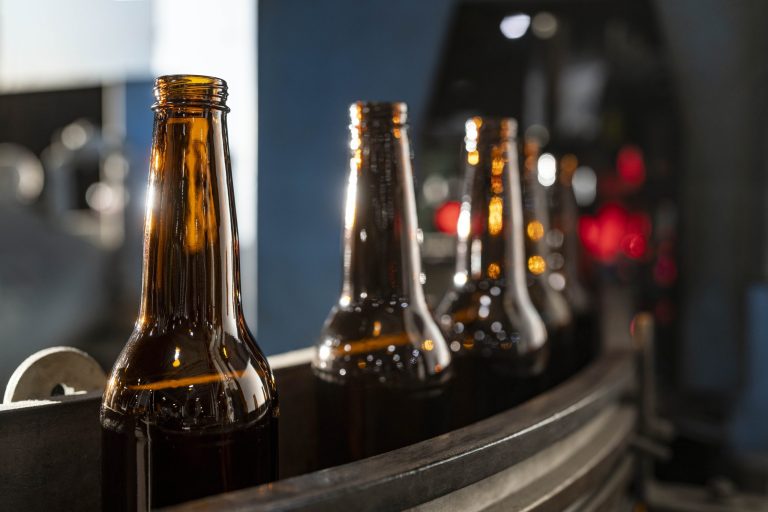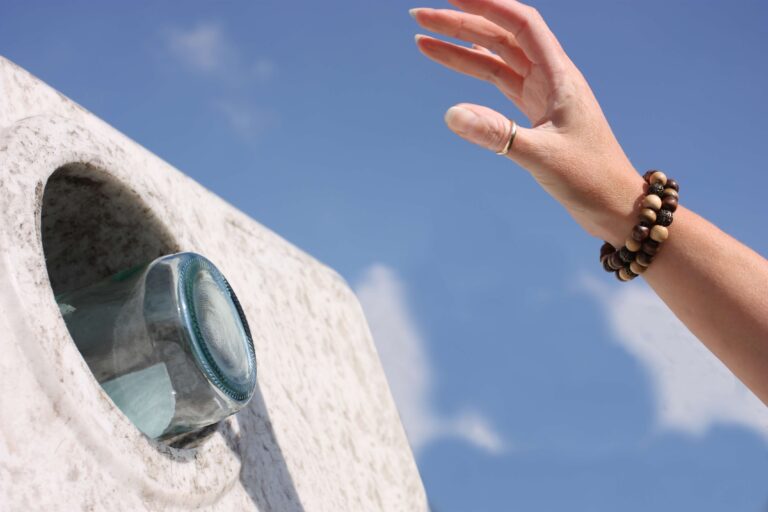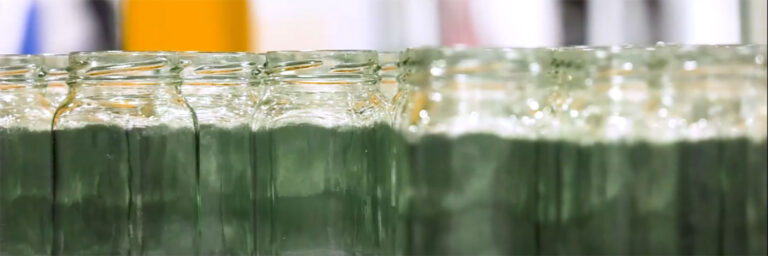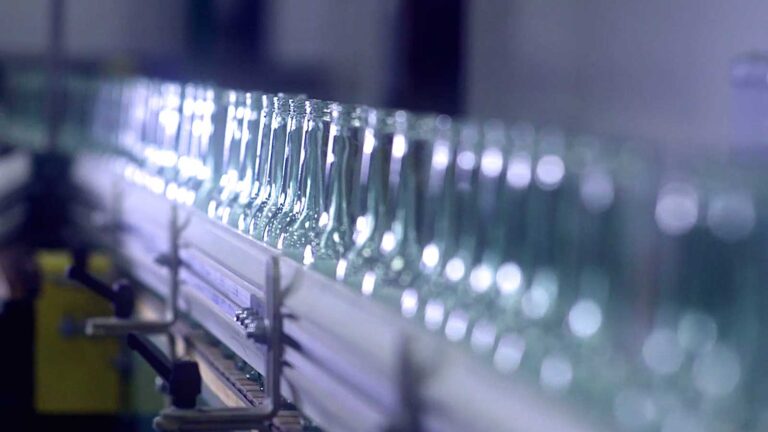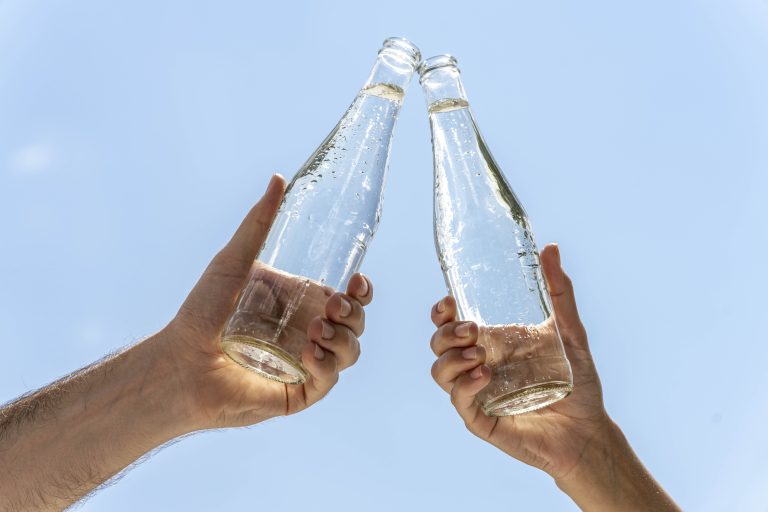In today’s beer market, standing still isn’t an option.
Brand owners are reevaluating their portfolios, exploring new packaging formats, and seeking more meaningful connections with consumers. Amid all this change, one packaging material continues to offer more than meets the eye, and it’s glass.
Not because it’s traditional. But because glass packaging is a strategic tool for growth, differentiation, and long-term brand success.
Glass is a Powerful Beer Brand Builder
You see, packaging is the physical representation of a brand. As such, it plays a critical role in reinforcing the brand essence at critical moments (purchase, consumption) – speaking to shoppers’ subconscious as they browse the crowded aisles. And glass is more than just a container; it’s also a multi-sensory brand experience. Through its clarity, shape, and texture, glass is the only packaging material that has the ability to fully leverage all of our senses and therefore most fully project a brand’s identity. It signals quality, delivers a unique tactile feel, and visually stands out on crowded shelves.
Whether you’re marketing a heritage lager or a modern craft brew, launching a non-alcoholic variant or expanding beyond beer, glass reinforces your brand’s story while elevating every sip. Just check out our design book, where we’ve collaborated with Ninkasi Blonde, Corona, and Iron Maiden Bodebrown beer.
As noted in the Bloomberg Adria Beer Industry Report, with beer volume decreasing and pricing competition intensifying, glass can help brands come to life and stand out, from celebratory toasts and gatherings to everyday home rituals.
Without question, consumers associate glass bottles with authenticity and craftsmanship. These attributes continue to shape premium beer purchasing behavior globally. And according to Glass Packaging Institute’s research, consumers rate glass highest among all packaging materials for delivering a premium drinking experience.
But it isn’t just beer where this is the case.
Non-Alcoholic Beer: Consistency That Builds Trust
This is also true for non-alcoholic beer with glass packaging, giving the 0% alcohol variant 100% of the full brand experience.
The non-alcoholic beer segment continues to grow rapidly as health-conscious consumers seek moderation without sacrificing experience – and maybe without driving too much visibility on their non-alcoholic choice.
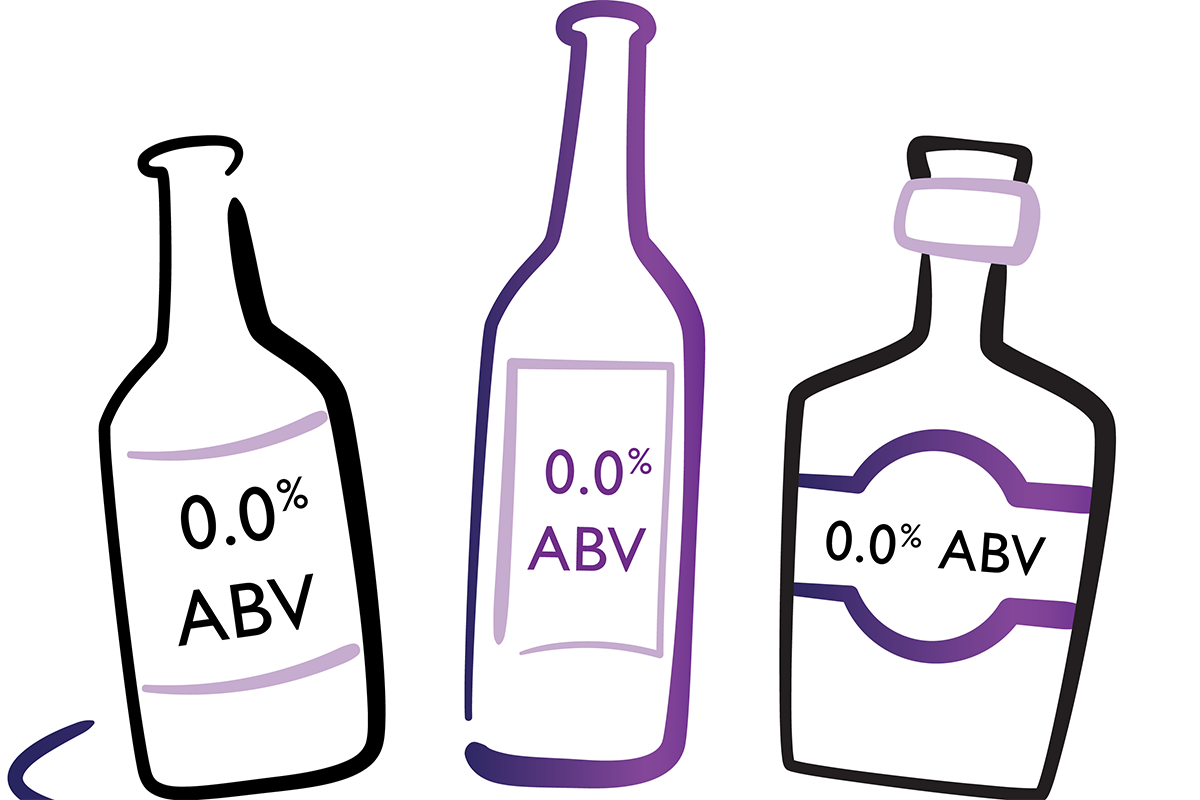
Keeping the same glass bottle across both variants signals to consumers that quality and enjoyment are never compromised, no matter the ABV (alcohol by volume). It also maintains consistent brand cues.
Optimizing Price Pack Architecture with Glass
Successful beer brands are also leveraging PPA (price pack architecture) to do more than manage margins; they shape how consumers perceive value and quality.
Glass offers unmatched versatility in package design, supporting:
- Premium positioning with sleek, unique bottles
- Value tiers through simpler bottles or different pack sizes that balance cost and quality
- Occasion-based formats like single-serve bottles or multi-serve for gatherings
This flexibility enables marketers to align packaging with growth and channel strategies, ensuring that every format meets a specific consumer, retailer or on-trade partner need.
For example, returnable glass bottles offer both affordability and sustainability, hitting a sweet spot with environmentally conscious consumers who don’t want to compromise on quality.
Format innovation is another area where glass plays a key role.
According to Euromonitor data, multi-serve formats are gaining traction, offering consumers a more social option.
A larger glass bottle is perfect for sharing, looks more premium on the table, and can be easily resealed. All of these are advantages that cans can’t replicate.
Meanwhile, smaller bottles (such as 25 cl formats) are gaining popularity in some countries, allowing consumers to enjoy a perfect portion without waste. This diversity within glass packaging empowers brewers to tailor offerings by occasion, channel, and price point.
Beyond Beer: Glass is Gaining Ground in RTDs and NABs
Today’s major brewers are diversifying into adjacent categories such as spirits-based ready-to-drink (RTD) cocktails, or Non-Alcoholic Beverages and glass is increasingly relevant there too. As a recently published IWSR study on U.S. RTD reveals, the glass bottle is now the preferred format (ranked 1st with 39%) in the premium RTD segment.
For brand owners, that means glass not only elevates perceived value but also supports premium pricing strategies.
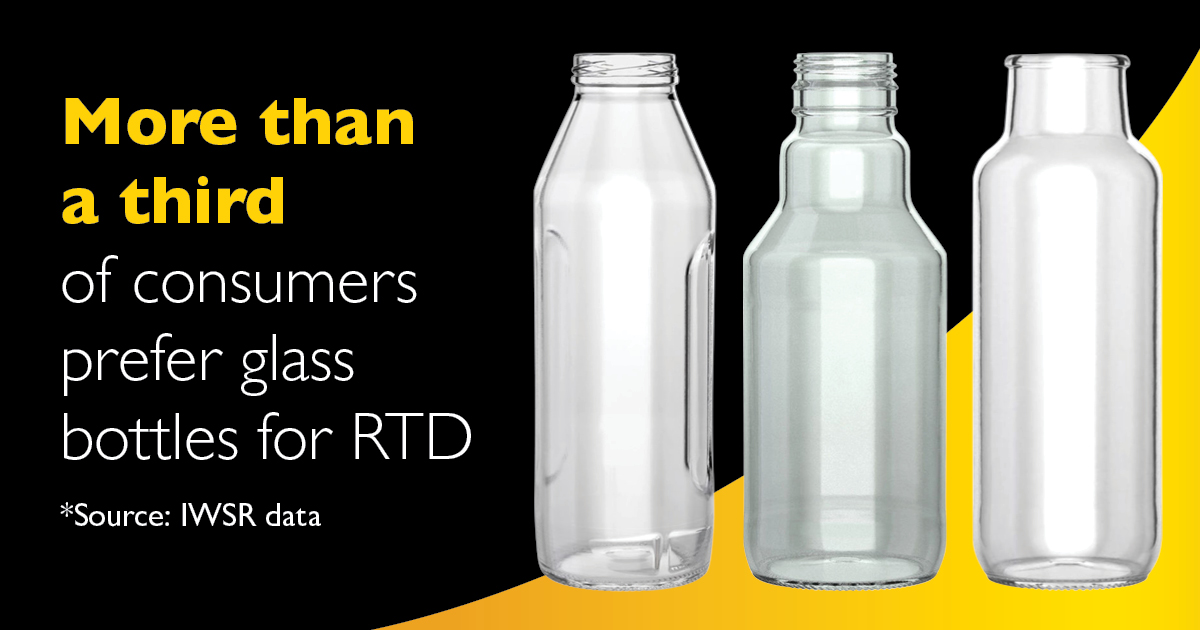
RTD and NAB producers are leveraging glass to stand out in competitive spaces where design, transparency, and authenticity matter. From sleek single-serve cocktails to adult soft drinks and functional beverages, glass offers a cool, refreshing feel.
And the sound of glass just reinforces those quality cues that can drive repeat purchase.
Glass and Sustainability: Circular, Credible, and Future-Ready
Today’s consumers expect brands to reflect their values, and sustainability is at the forefront of this expectation.
Brewers are setting bold sustainability targets. O-I is partnering with customers to help them achieve those targets, anchored in the inherent sustainability benefits of glass bottles. Glass is not only endlessly recyclable and can be made into new bottles without losing quality, but at O-I:
- We achieved a global average of 41% recycled content in our packaging; That number can rise to more than 80% of recycled content per package depending on geography and glass color.
- We continue to advance lightweighting innovations that reduce environmental impact.
- Glass bottles from O-I are perfect for refillable systems, supporting a fully circular economy.
Glass doesn’t just meet sustainability expectations; it does so credibly, providing a transparent and trusted solution that resonates with consumers.
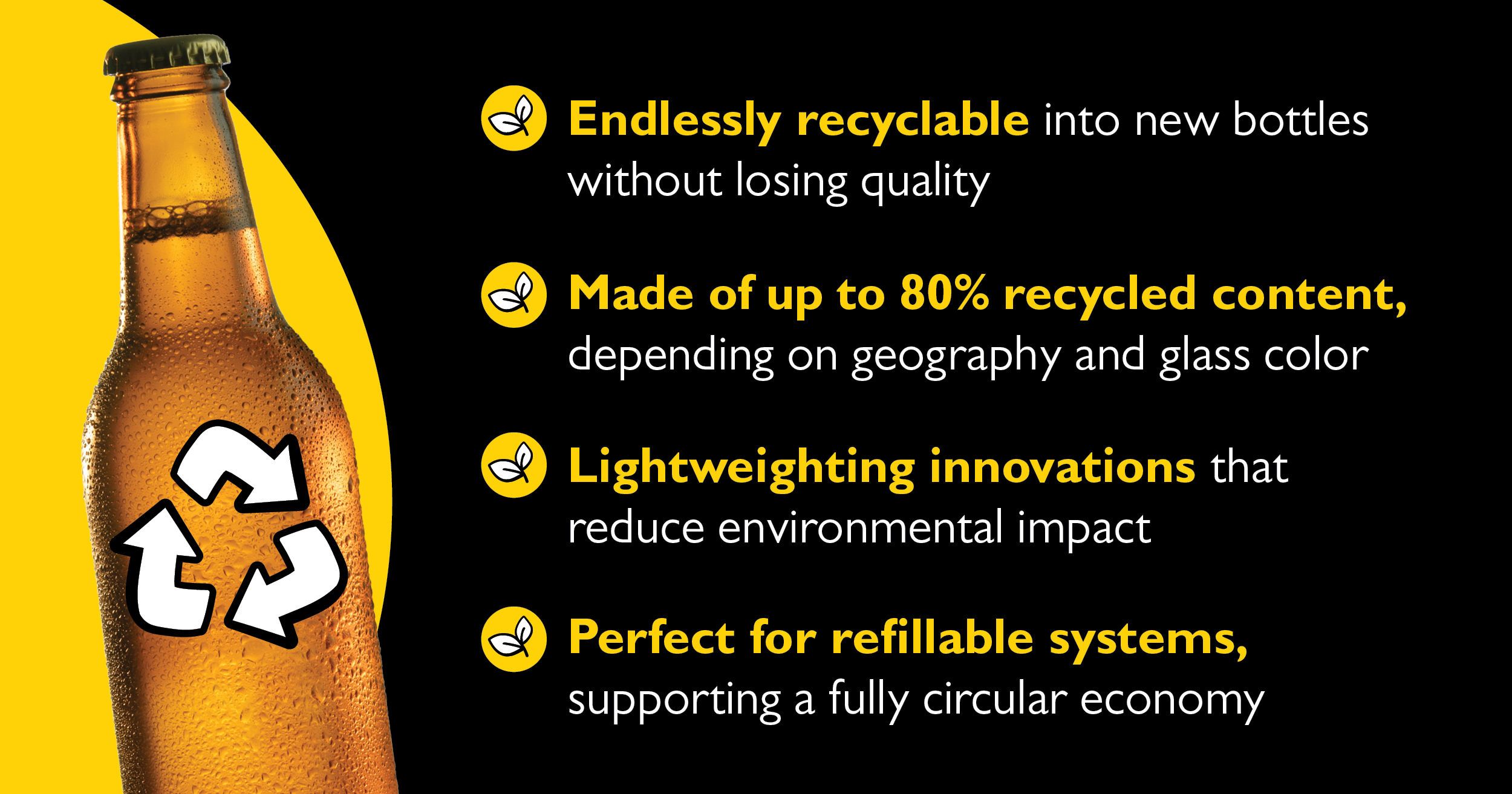
This trust is critical as brands face growing scrutiny regarding greenwashing and sustainability claims. Glass offers a proven, verifiable path toward circularity that strengthens a brand’s reputation.
At O-I, we are investing in innovation to make glass even more competitive. From advanced manufacturing that reduces carbon emissions to collaborating with stakeholders to improve glass recycling infrastructure, we are committed to creating sustainable beverage packaging solutions.
Why Beer Brands Choose O-I
At O-I, we don’t just produce glass. We understand the beer industry.
Our global experience spans partnerships with leading breweries and emerging craft disruptors. We’ve worked with brands through shifts in consumer behavior, evolving packaging trends, and complex portfolio decisions.
By combining category insights, consumer research, and technical expertise, we help beer brands make data-driven packaging decisions that unlock new growth opportunities.
If you’re exploring new packaging formats, restructuring your portfolio, or seeking innovative ways to grow, glass may be the strategic lever your brand needs.
Let O-I be your glass packaging partner in building a future where your beer stands out, delights consumers, and drives sustainable growth.
Contact O-I today to discover how we can assist you in creating the ideal glass packaging solution.


